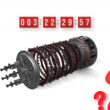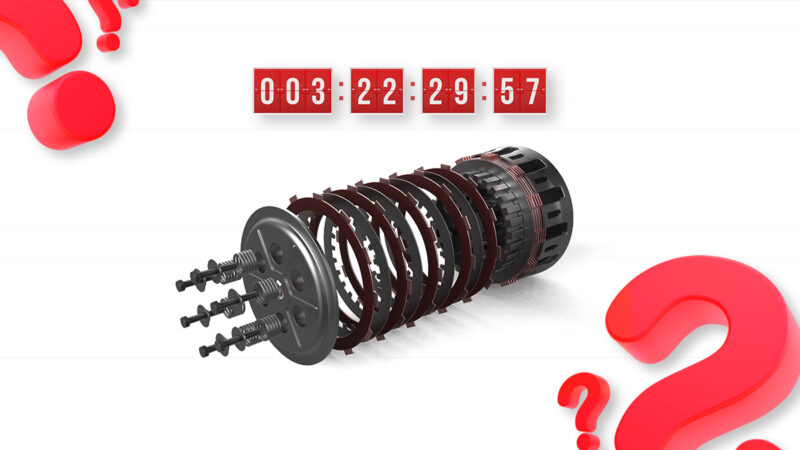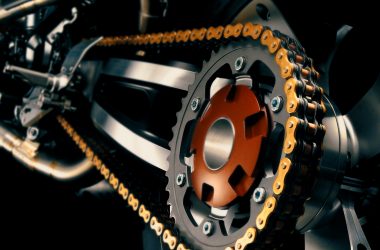The clutch is an integral part of the motorcycle that is needed to shift gear and get the motorcycle moving. Riding condition and riding style play a big role in the integrity and state of its condition. But generally how long does a motorcycle clutch last?
On average the motorcycle clutch lasts 20,000-70,000 miles / 32,168-1,12,654 kilometers if it’s regularly maintained and well lubricated. Harsh gearshift and improper use of the clutch lever will cause the clutch to burn and get damaged and wouldn’t even last 3000 miles or till the next service interval.
In this article we will discuss the average lifespan of the clutch in detail and what factors affect it. Other questions such as when should you replace the clutch and some obvious signs/symptoms you should keep an eye on that can indicate signs of wear/damage.
And most importantly, we will go through some helpful tips on how to maintain your motorcycle clutch.
Table of Contents
When Should You Replace A Motorcycle Clutch?
You should replace your motorcycle’s clutch when it starts to experience issues such as clutch slip or clutch drag. Regular miss shifts with a hard knocking sound are clear indications of damage and need replacement of clutch parts such as clutch plates, inner hub, or clutch basket.
Motorcycle clutch generally lasts for a long time if you follow a good maintenance routine. On average, you could expect a good quality OEM or an after-market motorcycle clutch to last above 20,000 miles.
But harsh riding styles such as drifting and frequent gear shifts without proper rev-matching on a regular basis will cause the clutch assembly to deteriorate at a faster pace and the clutch might not even last until the upcoming service interval.
What Factors Impact The Lifespan Of A Motorcycle Clutch?
There are a couple of riding, maintenance, & environmental factors that play a role in causing damage to the motorcycle clutch and impacting the lifespan or longevity of a motorcycle clutch.
Here are three significant causes/factors that directly damage your motorcycle clutch and impact its lifespan.
- Riding Style:
The way you ride profoundly influences clutch longevity. Aggressive riders, fond of quick acceleration and abrupt gear changes with no rev-matching may find their clutches wearing out faster. Opting for a smoother, more controlled riding style and proper gearshifts can significantly extend the life of your clutch. - Maintenance Practices:
Regular inspections with a proper maintenance schedule are crucial for a healthy clutch. Periodic adjustments, ensuring the clutch cable is in top condition, and maintaining proper engine oil levels all contribute to a prolonged clutch life. Neglecting these aspects can accelerate wear and lead to premature failure. - Environmental Riding Conditions:
High temperature coupled with rough terrain riding ( off-road, trail) will require constant gear changes. An observant maintenance routine with quality parts while replacing is a must. Frequent challenging riding conditions will obviously put a lot of load on your motorcycle’s clutch. Adequate riding skill with proper clutch control and possibly trying to avoid prolonged rides in such conditions and give your bike breaks to cool down.
These are the core factors that impact the longevity or lifespan of a motorcycle clutch, and the rider’s skill plays a crucial role in this whole scenario.
Signs When Your Clutch Needs Replacement?
Now we will look into some symptoms or signs that will let you know the clutch needs replacement.
Some of these signs can be experienced during the early stages of clutch wear and can give you clear indications and conclusions about whether you should replace your clutch or not, and you might experience these signs while changing gears or casual riding.
1. Slipping Clutch
If you notice a sudden increase in engine RPM without a corresponding increase in speed, your clutch might be slipping. This indicates insufficient friction, possibly due to worn-out friction plates of the clutch pack. The motorcycle will lose power or not move at all when you go from neutral to 1st gear.
2. Clutch Dragging
A clutch drag is a clear sign that your clutch needs replacement. If your motorcycle stalls/shuts off when you shift gear from neutral to first, then it means the clutch plates are dragging where they are completely compressed against each other even when you pull in the clutch lever.
3. Difficulty Shifting Gears
Feeling resistance or encountering difficulty when shifting gears? It could be a sign of a worn-out or misadjusted clutch. Ignoring this can lead to more severe transmission issues and significant damage to the clutch assembly.
4. Unusual Noises From Clutch Assembly
A worn clutch will produce a loud metallic noise while you shift gears, along with rough gearshifts the sound will be pretty easy to notice. So replacing the damaged clutch parts is advisable.
How To Extend Clutch Lifespan & Maintenance
- Proper Riding Techniques:
The art of motorcycle riding involves finesse. Smooth gear changes and proper clutch actions reduce stress on the clutch components. Avoid unnecessary clutch modulations required during high-traffic rides or during drifting. - Regular Maintenance Routine:
Lubricate the clutch cable, inspect for wear, and ensure proper engine oil levels. Small efforts in maintenance can result in significant gains in clutch lifespan. Look for any signs of wear while performing regular check-ups. - Quality Replacement Parts:
When the inevitable replacement time arrives, invest in quality parts. Opting for cheap alternatives may save money upfront but can lead to more frequent replacements and increased long-term costs.
Common Misconceptions About Clutch Longevity
Let’s debunk some common myths and misconceptions about motorcycle clutch.
- Myth 1: Clutch Fails Suddenly
In reality, motorcycle clutch often display warning signs such as slipping, dragging, difficulty shifting gears, or loud noises while gear shifting before complete failure.
- Myth 2: Clutch Replacement Is Extremely Costly
While replacement can be a significant expense, neglecting a worn-out clutch can lead to more extensive and expensive transmission issues or a whole clutch assembly replacement.
Common FAQs
How often should I replace my motorcycle clutch?
Ideally, every 20,000 to 70,000 miles, but regular inspections can prevent possible damages.
Can a slipping clutch be fixed without replacement?
It depends on the severity of the issue; sometimes, adjustments can help, but replacement might be inevitable.
Is upgrading to a performance clutch worth it for casual riders?
It depends on your riding style and preferences; for some, it’s a game-changer, while others may not notice a significant difference.
Can I use aftermarket clutch components?
Yes, but ensure they meet the required specifications and quality standards.
Conclusion
The clutch is a crucial part of the motorcycle. Understanding and adopting proper maintenance practices is mandatory, and riding with proper clutch control is the key to a longer-lasting ride. So, gear up, ride on, and let your clutch be the unsung hero of your biking adventures.







